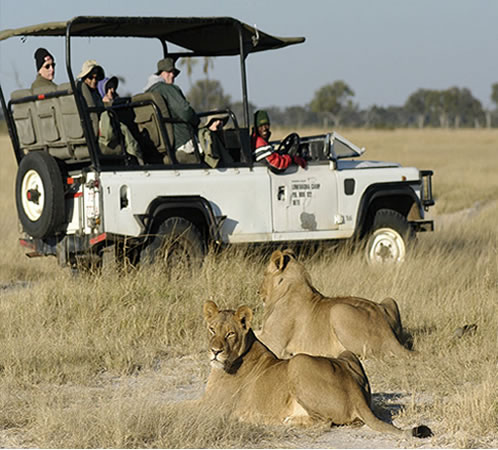
The park is close to the edge of the Kalahari desert, a region with little water and very sparse, xerophile vegetation. .Seasonal wetlands form grasslands in this area. The north and north-west of the park are dominated by mopane woodland. Although it has been argued that elephant populations cause change in vegetation structure, some recent studies suggest that this is not the case, even with the large increases in elephant population recorded in the late 1980s.
The Park hosts over 100 mammal and 400 bird species, including 19 large herbivores and eight large carnivores. All Zimbabwe's specially protected animals are to be found in Hwange and it is the only protected area where gemsbok and brown hyena occur in reasonable numbers. Grazing herbivores are more common in the Main Camp Wild Area and Linkwasha Concession Area, with mixed feeders more common in the Robins and Sinamatella Wild Areas, which are more heavily wooded. Distribution fluctuates seasonally, with large herbivores concentrating in areas where intensive water pumping is maintained during the dry season.The population of African wild dogs to be found in Hwange is thought to be of one of the larger surviving groups in Africa today, along with that of Kruger National Park and Selous Game Reserve. Other major predators include the lion, whose distribution and hunting in Hwange is strongly related to the pans and waterholes, leopard, spotted hyena and cheetah..
Named after a local Nhanzwa chief, Hwange National Park is the largest Park in Zimbabwe occupying roughly 14 650 square kilometers. It is located in the northwest corner of the country about one hour south of the Mighty Victoria Falls. It became the royal hunting grounds to the Ndebele warrior-king Mzilikazi in the early 19 th Century and was set aside as a National Park in 1929. Hwange boasts a tremendous selection of wildlife with over 100 species of mammals and nearly 400 bird species recorded. The elephants of Hwange are world famous and the Park's elephant population is one of the largest in the world. The Park has three distinctive Camps and administrative offices at Robins, Sinamatella and the largest one at Main Camp. .